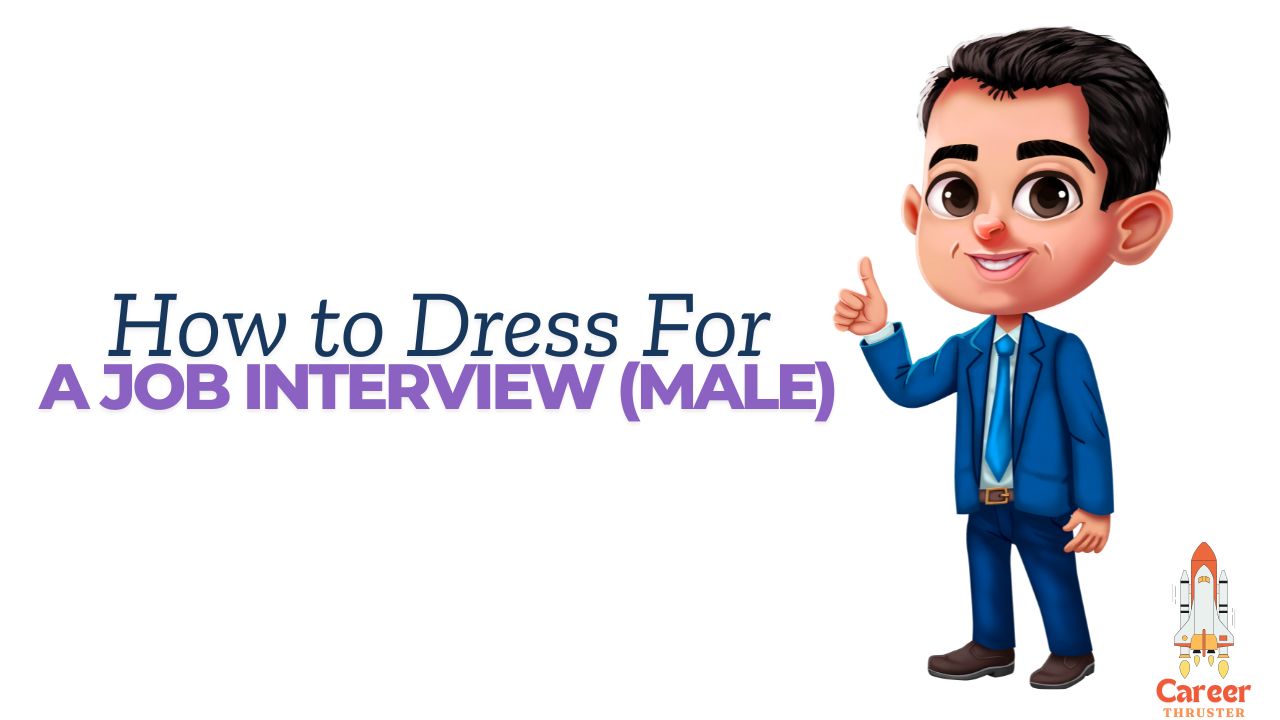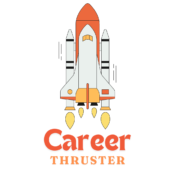💡 Are you preparing for an important interview? Use this guide to plan your outfit and show up looking sharp, professional, and ready to succeed.

Dressing for a job interview isn’t just about looking good; it’s about making a positive first impression. For men, deciding how to dress for a job interview male candidates can feel like a balancing act between looking sharp, feeling comfortable, and aligning with the company’s culture.
This guide will walk you through selecting the right outfit, ensuring you step into your next interview confident and well-prepared.
Table of Contents
1. Understand the Company’s Dress Code and Culture Before Choosing Your Outfit
The first step to deciding how to dress for your job interview is understanding the company’s dress code. Research the organization to see if they lean toward formal, business casual, or even casual attire.
💡 Example: For corporate roles in industries like finance or law, a classic suit in black, navy, or charcoal paired with a white shirt and a solid tie is always a safe choice. If you’re applying at a tech startup or creative agency, a blazer with a dress shirt and chinos can strike the perfect balance between formal and relaxed.
Taking the time to match your attire to the company’s culture shows that you’ve done your homework and respect their expectations.
2. Choose a Suit That Fits Well and Exudes Professionalism
A well-fitted suit is a must for most professional interviews. Fit is key—a suit that is too loose or too tight can detract from your overall appearance. Opt for classic colors like navy, charcoal, or black, as they’re versatile and timeless.
💡 Example: A tailored navy suit paired with a light blue shirt and a burgundy tie creates a sophisticated look without appearing too stiff. Ensure your suit is freshly pressed, and pay attention to small details, such as button alignment and proper sleeve length.
If wearing a full suit isn’t required, consider pairing a blazer with dress pants or chinos. A blazer instantly elevates your look while still allowing some flexibility.
3. Pay Attention to Your Shirt and Tie Combination
The shirt and tie combination is a critical part of your outfit. Stick to solid or subtly patterned shirts in colors like white, light blue, or pastel tones. For your tie, keep it simple—solid colors or subtle patterns work best.
💡 Example: Pairing a white shirt with a navy tie and a charcoal suit is a classic combination that works for almost any formal interview. For less formal settings, a patterned shirt with no tie or a knit tie can add a touch of personality while staying professional.
Avoid bold patterns or overly bright colors, as these can be distracting and may come across as unprofessional in traditional settings.
4. Select Polished Shoes That Complete Your Look
Your shoes can make or break your outfit. Choose closed-toe leather shoes such as Oxfords, Derbies, or loafers, depending on the formality of the interview. Black or brown leather shoes are classic options that pair well with most suits and business attire.
💡 Example: Black Oxfords are ideal for a corporate setting, while brown loafers work well for business casual environments. Make sure your shoes are clean and polished, as scuffed or dirty shoes can detract from an otherwise sharp look.
Pair your shoes with matching socks—preferably in solid, neutral colors that complement your outfit.
5. Don’t Overlook Accessories Like Belts, Watches, and Pocket Squares
Accessories can elevate your outfit, but they should be kept subtle and professional. A classic leather belt that matches your shoes is a must. A wristwatch with a simple design can also add a polished touch to your look.
💡 Example: A silver or gold watch with a leather strap adds sophistication without being overbearing. For more formal roles, consider adding a pocket square in a neutral or slightly contrasting color to your blazer.
Avoid excessive jewelry, flashy cufflinks, or bold accessories that might distract from your overall appearance.
6. Grooming Matters: Look Neat and Polished
Your grooming is as important as your clothing when making a good impression. Ensure your hair is neatly styled, and if you have facial hair, keep it trimmed and well-maintained. Clean, clipped nails and a light application of cologne complete the look.
💡 Example: If you have a beard, ensure it’s neatly shaped. For clean-shaven looks, a smooth shave with no visible stubble works best. Your grooming signals that you’re detail-oriented and take the interview seriously.
More From Us- How To Dress For A Job Interview (Female)
7. Adapt Your Outfit for Business Casual or Creative Industries
If the company leans toward business casual or creative industries, you can dress slightly less formally while still looking professional. For business casual roles, a blazer paired with chinos and a button-down shirt strikes the right tone.
💡 Example: A navy blazer, white button-down, and beige chinos are perfect for interviews at startups or design firms. If no tie is needed, you can leave the top button of your shirt undone for a relaxed yet polished appearance.
This flexibility lets you tailor your outfit to the specific environment while maintaining professionalism.
8. Plan Your Outfit for Virtual Interviews as Thoughtfully as In-Person Ones
Even in virtual interviews, your outfit matters. Dressing professionally from head to toe—even if only your upper half is visible on camera—boosts your confidence and shows respect for the opportunity.
💡 Example: A blazer over a solid-colored shirt creates a sharp, professional appearance on video. Avoid bright colors or distracting patterns, as they might not translate well on camera. Choose a well-lit, neutral background to keep the focus on you.
Dressing fully in professional attire, even for virtual interviews, helps you feel prepared and focused.
9. Avoid Common Mistakes That Could Undermine Your Professional Appearance
Some mistakes can detract from an otherwise well-thought-out outfit. Avoid wearing clothes that are wrinkled, stained, or don’t fit well. Overly casual choices, like sneakers or T-shirts, can signal a lack of preparation.
💡 Example: A candidate wearing an ill-fitting suit or scuffed shoes might come across as careless, even if their qualifications are strong. Taking the time to iron your clothes, polish your shoes, and check for minor flaws can make all the difference.
When in doubt, always err on the side of being slightly overdressed rather than underdressed.
10. Real-Life Examples of Men Who Have Used Style to Make an Impression
Many successful men have leveraged thoughtful attire to project confidence and professionalism during their careers. Barack Obama, for instance, is known for his impeccable suits, which are tailored to perfection and always appropriate for the occasion.
💡 Example: Steve Jobs, on the other hand, embraced simplicity with his black turtlenecks and jeans, reflecting his brand’s minimalist ethos. This worked because it aligned with his industry and personal style. For interviews, taking inspiration from professionals in your field can guide your choices.
Final Thoughts
Mastering how to dress for a job interview male candidates is about aligning your attire with the company’s expectations, focusing on fit and comfort, and paying attention to details. A thoughtfully chosen outfit not only enhances your confidence but also leaves a strong impression on your interviewer.
